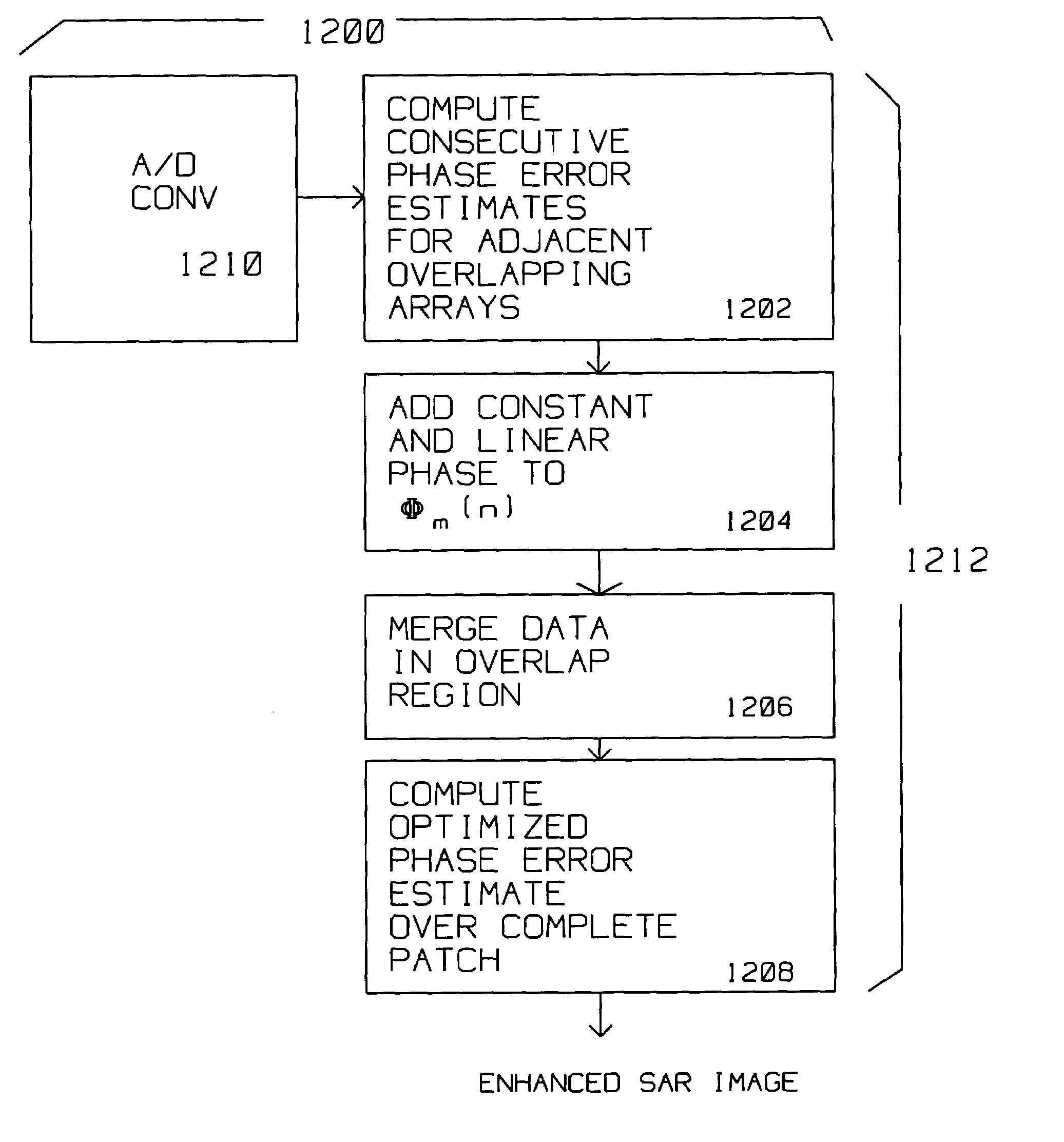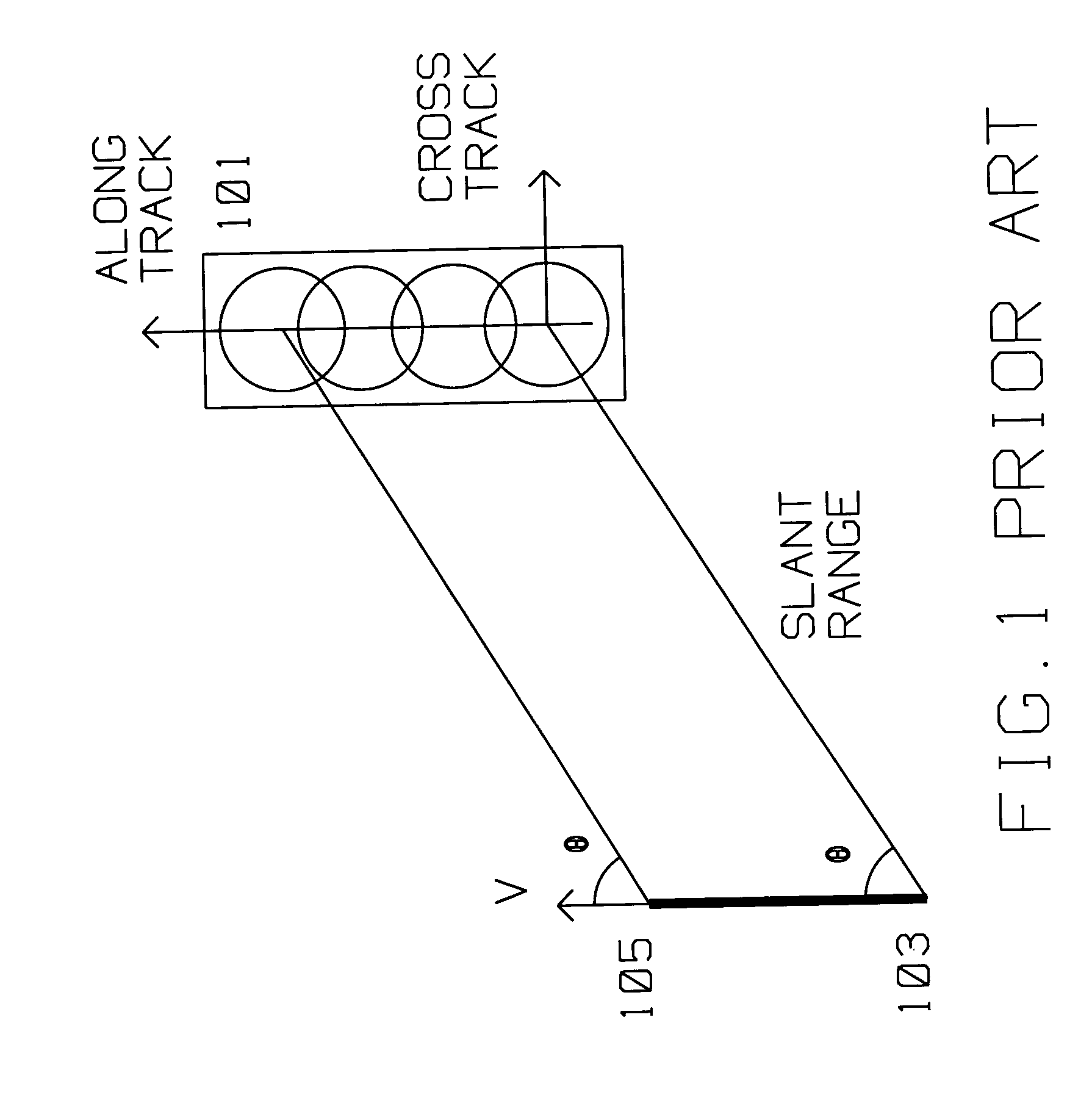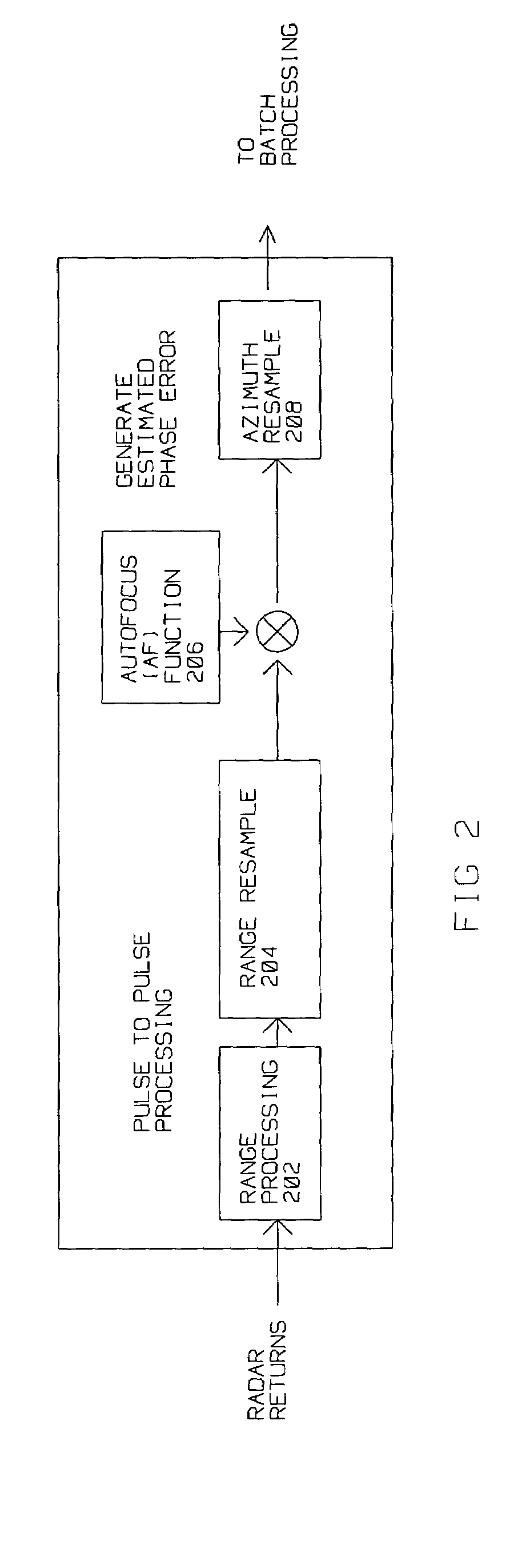Efficient autofocus method for swath SAR
a synthetic aperture radar and efficient technology, applied in the field of autofocus methods for search (swath) synthetic aperture radar (sar) imaging, can solve the problems of image smearing in the azimuth direction, insufficient accuracy of motion compensation derived phase compensation applied to each radar a/d sample, and difficulty in estimating and correcting residual phase error for autofocus using one dimensional batch processing
- Summary
- Abstract
- Description
- Claims
- Application Information
AI Technical Summary
Benefits of technology
Problems solved by technology
Method used
Image
Examples
Embodiment Construction
[0039]The present invention describes a method for improving search type SAR images of a patch using overlapping arrays covering the patch.
[0040]SAR images require accurate phase alignment of the reflected pulses to achieve the in-phase combination of the information contained therein. Phase errors arise from navigation data inaccuracies from motion compensation, or from atmospheric effects on radar returns causing de-focusing of SAR images. The methods used to compensate for these type of errors, is called auto-focus (AF). AF depends on information contained in motion compensated radar collected data to perform relatively fine, accurate phase correction not originally provided by motion compensation.
[0041]Unlike the case in spot SAR mode, processing for AF in search SAR mode requires continuous estimates of phase errors so multiple SAR arrays can be combined into a large patch. Furthermore, images generated in search mode are oriented in the along-track, cross track direction, unli...
PUM
 Login to View More
Login to View More Abstract
Description
Claims
Application Information
 Login to View More
Login to View More - R&D
- Intellectual Property
- Life Sciences
- Materials
- Tech Scout
- Unparalleled Data Quality
- Higher Quality Content
- 60% Fewer Hallucinations
Browse by: Latest US Patents, China's latest patents, Technical Efficacy Thesaurus, Application Domain, Technology Topic, Popular Technical Reports.
© 2025 PatSnap. All rights reserved.Legal|Privacy policy|Modern Slavery Act Transparency Statement|Sitemap|About US| Contact US: help@patsnap.com



